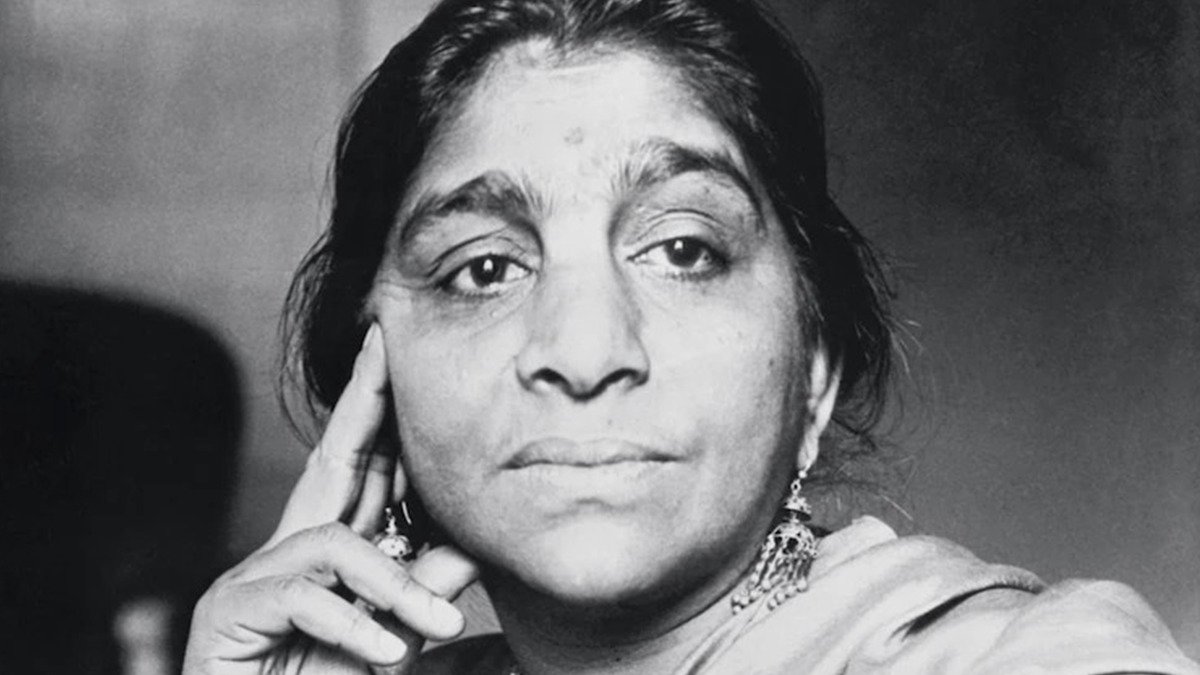EVERY year on February 13, India celebrates freedom fighter Sarojini Naidu’s birth anniversary as National Women’s Day. A close associate of Mahatma Gandhi in the fight for independence from the British, he also nicknamed her the ‘Nightingale of India,’ for her well-known talent as a prolific poet. But it is for her contribution to women’s rights in India that Sarojini Naidu’s birthday is commemorated as National Women’s Day.
Born to Bengali parents in Hyderabad in 1879, Sarojini Chattopadhyay fell in love with poetry at an early age, inspired by her mother, Barada Sundara Devi. When she was barely 12 years old, she wrote a 1,300-line poem ‘Lady of the Lake.’ She met her future husband Muthyala Govindarajulu Naidu, a physician, when she was only 17 years old and married him two years later. Although it was an inter-caste marriage, with Govindarajulu Naidu being a non-Brahmin, Sarojini’s progressive parents went with their daughter’s choice.
After her higher studies in the UK, she came back to India and joined the Indian national movement during the protest against the partition of Bengal in 1905. She plunged into the freedom struggle full-time and also fought for women’s rights.

Sarojini Naidu often spoke about the importance of women’s empowerment and the need for more women to participate in the freedom struggle and for their rights. Here are five ways in which Sarojini Naidu made a difference for women’s rights in the country.
Rights of widows
At the 22nd session of the Indian National Social Conference held in 1908, Sarojini Naidu pushed a resolution demanding educational facilities for widows, establishing women’s homes, and removing obstacles in the remarriage of widows. She did this at a time when these subjects were considered controversial.
Right to vote
In 1917, Sarojini Naidu set up the Women’s Indian Association (WIA), with Annie Besant and others. The main aim of the WIA was to obtain women’s right to vote. She led a women’s voting rights delegation to London to plead for equal rights for women and also joined the international movement for women’s suffrage.

Right to equality
Sarojini presided over the Indian National Congress at its 1925 session, making her the first Indian woman to become the president of the Congress. (The first woman to preside over the session was Annie Besant, a British citizen in 2017). Reporting about the event, The New York Times did a long feature with the headline, “A Joan of Arc Rises to Inspire India.’
She considered her appointment as Congress President as a “generous tribute to Indian womanhood.” During her presidential address, she spoke about the “restoration” of women’s role in society as in the classical Indian period. She also asserted that freedom would be reached only with “equality for women.” During her presidency, she suggested the creation of a women’s section of Congress and advocated the particular need to talk about women’s empowerment in India. In 1926, the women’s movement with her as one of its leaders gained its first success in the form of women being appointed as members of legislatures by nomination.
You can explore women’s rights and empowerment NGOs on Give.do and donate here.
Right of representation
She founded both the WIA and All India Women’s Conference (AIWC). Both organisations played important roles in the fight for women’s rights in the country. Under her leadership, the AIWC pressed for non-communal elections as opposed to elections along communal lines as proposed by the British Parliament.

While the women’s organisations remained apolitical, these gave opportunities to many talented women to assert themselves, and several of them also joined political parties and participated in the nationalist movement. Addressing the Patna Session of the Women’s Conference, she spoke against the system of purdah and invited women to abandon the veil. Many orthodox sections of Indian society were against it, but she roped in Mahatma Gandhi to take a stand against it. She also campaigned for the right to divorce.
Right to equal political status
As the British were mulling a new constitution for India, in a 1931 letter addressed to the British Prime Minister, Sarojini Naidu and Jahan Ara Shahnawaz, prominent women activists at the time, representing “progressive” women of India demanded, “complete and immediate recognition of their [women] equal political status, in theory, and practice, by the grant of full adult franchise or an effective and acceptable alternative, based on the conception of adult suffrage.” They also asserted that “[t]o seek any form of preferential treatment would be to violate the integrity of the universal demand of Indian women for absolute equality of political status”. You can explore women’s rights and empowerment NGOs on Give.do and donate here.
–
Give’s mission is to “make giving bigger and better.” Give is the most trusted donation platform in India for fundraisers and crowdfunding campaigns. Through our technology solutions, we enable individuals and organisations to fundraise and donate to a cause, charity or NGO with trust and convenience. Give’s community of 2.7M+ individual donors and 300+ organisations supports 3,000+ verified nonprofits with 80G deduction and serves 15M+ people across India. Find a fundraiser today!

Kumara was a professional journalist for over 15 years, with stints in The Telegraph and Reader’s Digest. He grew up hating maths and physics. He is a post-graduate in history. Kumara believes that cricket and Seinfeld have answers to most questions that life throws at you.
Discover more from give.do
Subscribe to get the latest posts to your email.





